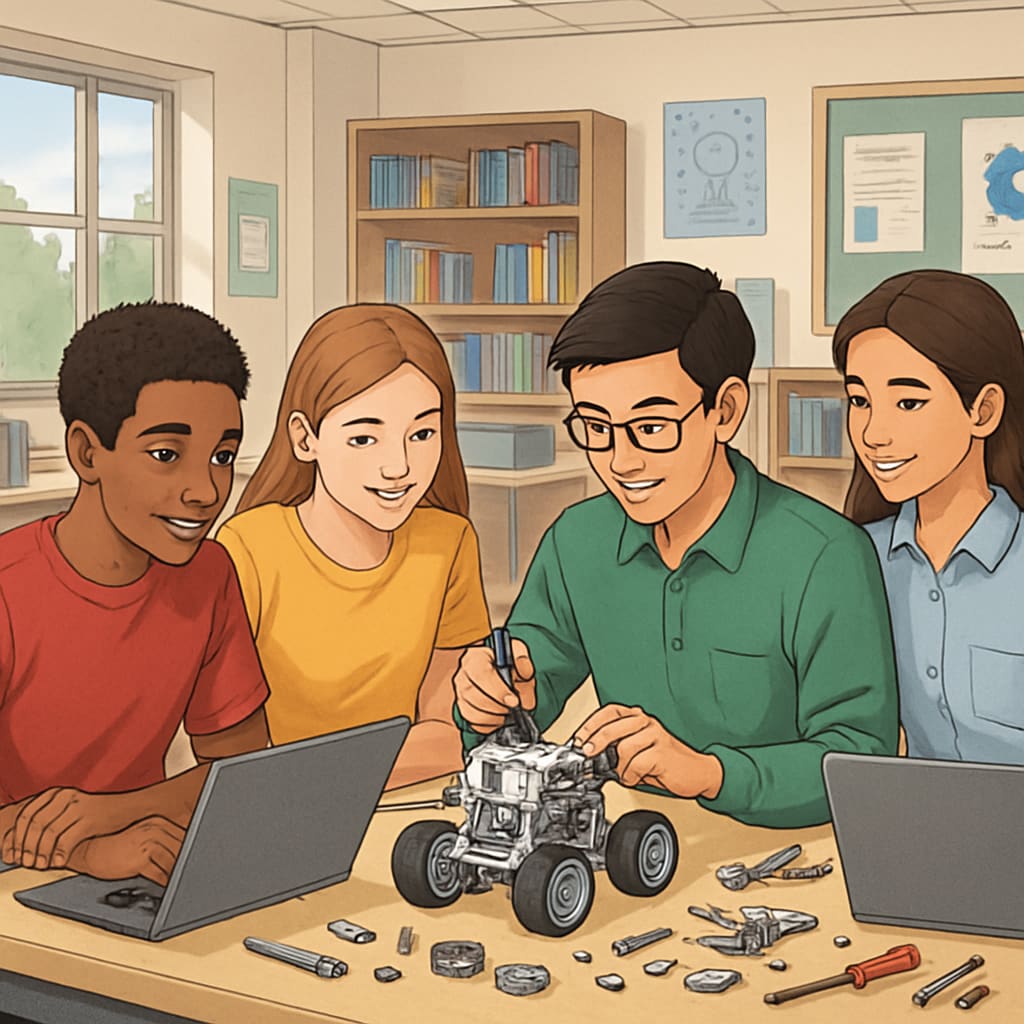Choosing the right academic and career path is one of the most significant decisions students face. In the realm of engineering design, the choices made during the K12 years can lay a strong foundation for pursuing a master’s degree and a successful career. Early exposure to engineering principles and problem-solving during these formative years fosters critical thinking, decision-making, and creativity, which are essential for career development. This article explores the role of engineering design education in preparing students for the challenges of higher education and the professional world.
Why Early Exposure to Engineering Design Matters
Engineering design education at the K12 level plays a pivotal role in shaping students’ academic and career trajectories. At its core, engineering design is about identifying problems, brainstorming solutions, and implementing practical outcomes—a skill set that transcends academic disciplines. Introducing these concepts early not only nurtures curiosity but also helps students develop the resilience needed to tackle complex challenges in the future.
For example, through project-based learning initiatives, students gain hands-on experience in areas like robotics, structural design, and environmental engineering. These activities provide a glimpse into the real-world applications of theoretical concepts. According to a Britannica overview of engineering, the discipline thrives on innovation and adaptability—qualities that can be cultivated early through K12 programs.

Building a Bridge to Advanced Degrees and Careers
A solid foundation in engineering design during K12 prepares students for higher education, particularly for pursuing a master’s degree. This advanced degree often serves as a gateway to specialized roles in engineering fields such as aerospace, biomedical, or software engineering. However, the decision to pursue a master’s degree depends on multiple factors, including personal interests, market demand, and the skills acquired during earlier education.
One way K12 students can prepare for this decision is by participating in STEM (Science, Technology, Engineering, and Mathematics) programs or internships. These experiences provide insights into practical applications and help students understand whether they wish to delve deeper into specific areas of engineering. For instance, a high school student interested in sustainable design might pursue advanced coursework or projects focusing on renewable energy solutions, paving the way for a master’s program in environmental engineering.
In addition to technical skills, students also develop soft skills such as teamwork, communication, and leadership—qualities that employers highly value. The integration of these skills into K12 education ensures that students are not only academically prepared but also equipped to thrive in collaborative professional environments.

Navigating the Crossroads of Career and Education
The transition from K12 to higher education often feels like standing at a crossroads. This is particularly true for aspiring engineers who must decide between entering the workforce immediately or pursuing a master’s degree. K12 engineering design education can provide clarity during this decision-making process.
For example, students who have been exposed to engineering challenges in high school may already have a clearer understanding of their strengths and interests. This self-awareness becomes crucial when weighing the pros and cons of advanced education. A master’s degree can lead to higher earning potential and specialized roles, but it also requires a significant investment of time and resources. On the other hand, entering the workforce early allows students to gain practical experience and financial independence.
To support informed decision-making, schools can offer career counseling and mentorship programs. These initiatives connect students with industry professionals and alumni, providing real-world insights into various career paths. For additional information on the value of engineering education, consider exploring the Engineering Education page on Wikipedia.
Key Takeaways for Educators and Parents
Educators and parents play a crucial role in guiding students through their academic and career choices. To maximize the impact of K12 engineering design education, consider the following strategies:
- Encourage participation in STEM clubs, hackathons, and design competitions.
- Expose students to diverse engineering fields through guest lectures and field trips.
- Provide resources for self-guided learning, such as online courses and tutorials.
- Foster a growth mindset by celebrating effort and learning from failure.
By creating a supportive environment, educators and parents can empower students to make informed decisions about their futures. As a result, students will be better equipped to navigate the complexities of advanced education and career planning.
In conclusion, the interplay between K12 engineering design education, master’s degree choices, and career development highlights the importance of early preparation. By fostering engineering skills and decision-making abilities from a young age, students can confidently embark on their academic and professional journeys, ensuring long-term success in the dynamic world of engineering.


